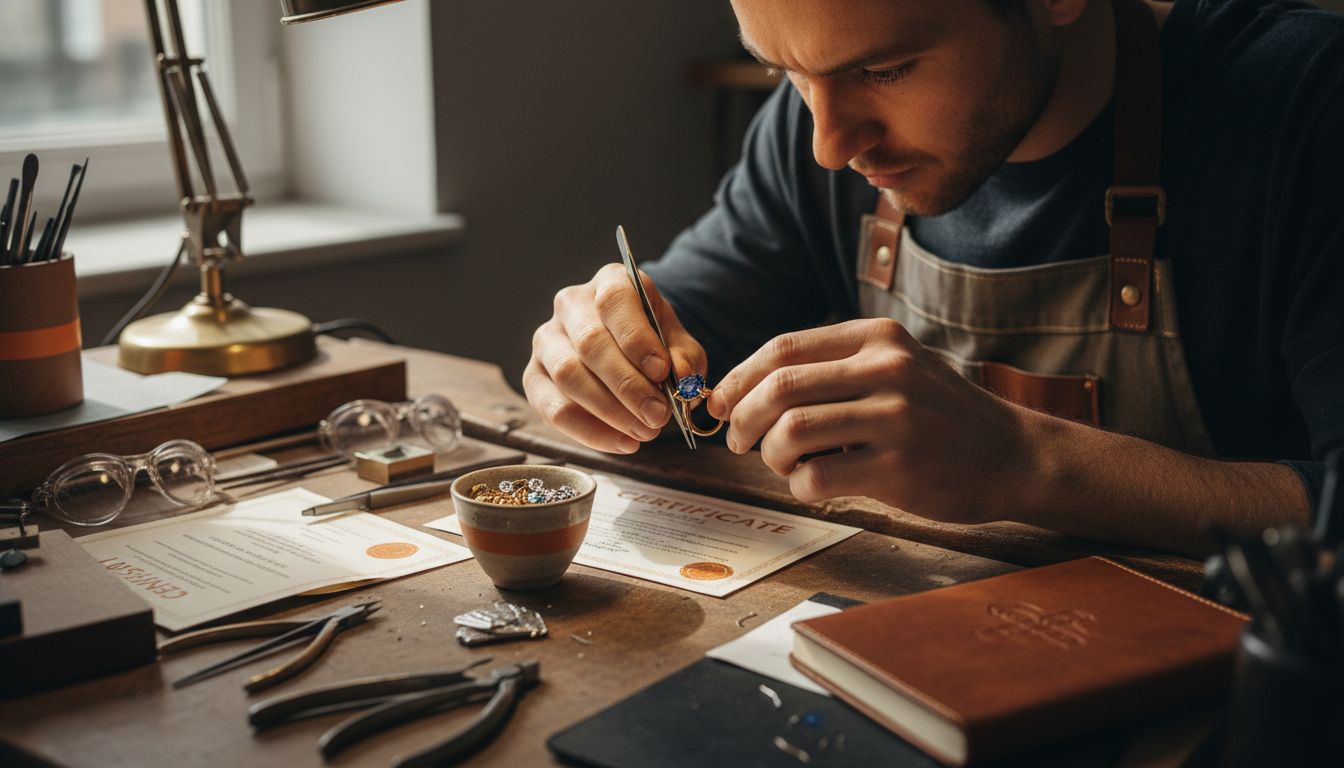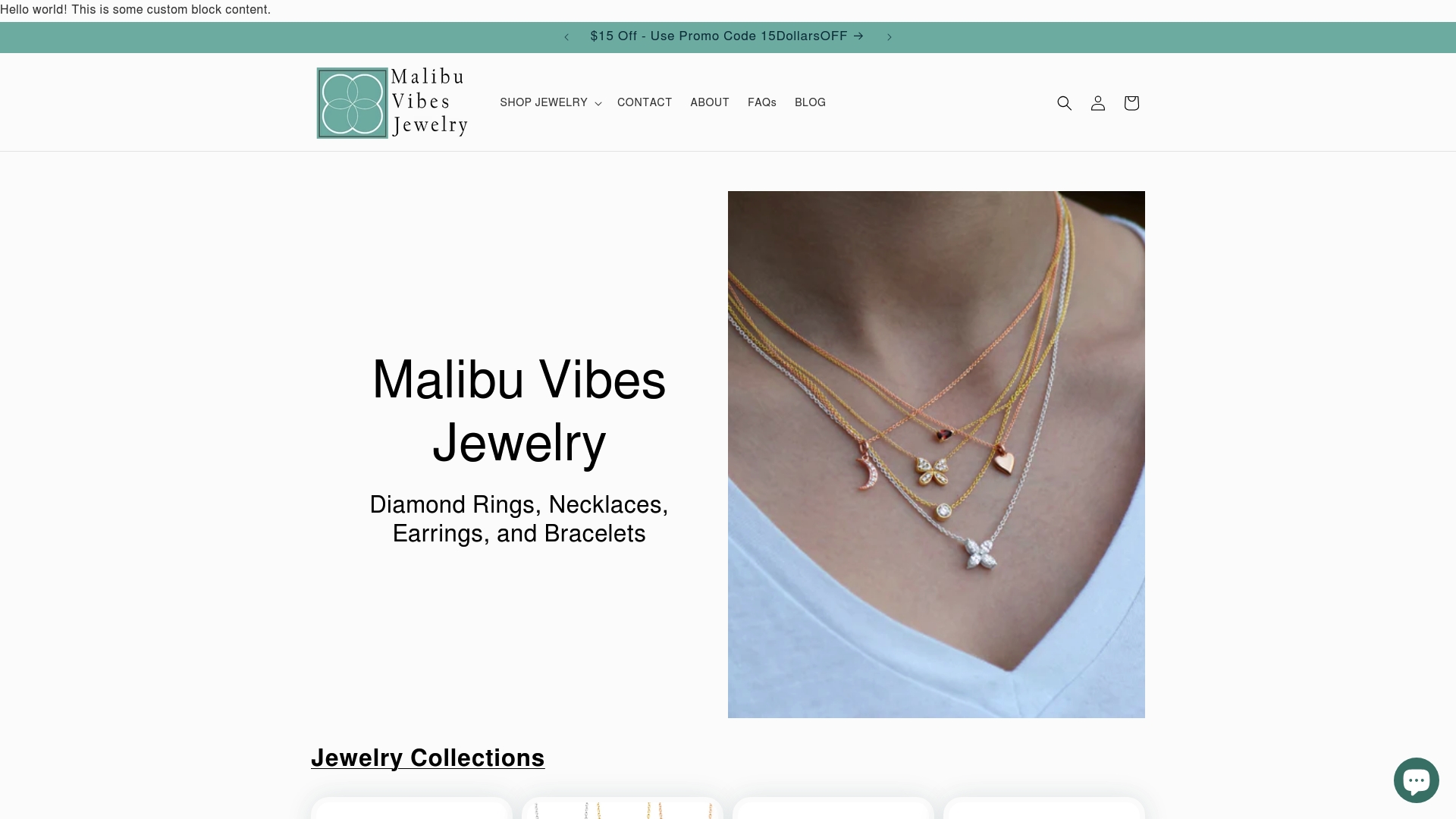Nearly 60 percent of people seek custom jewelry to mark personal milestones or express unique style. A truly meaningful piece does more than sparkle—it tells a story shaped by your vision and choices. Whether you dream of a one-of-a-kind ring or a necklace that feels like part of your story, understanding each step of the custom design process helps turn inspiration into a cherished keepsake.
Table of Contents
- Step 1: Define Your Vision And Inspiration
- Step 2: Select Materials And Gemstones
- Step 3: Collaborate With Design Experts
- Step 4: Review And Approve The Final Design
- Step 5: Oversee Craftsmanship And Quality
Quick Summary
| Key Point | Explanation |
|---|---|
| 1. Define your vision clearly | Start with inspiration sources that resonate with your personal style and convey the message you wish to express. |
| 2. Choose materials and gemstones thoughtfully | Select metals and gemstones based on their durability, personal significance, and aesthetic appeal to enhance your design. |
| 3. Collaborate openly with designers | Communicate effectively with designers to ensure your vision is accurately represented and refined into a wearable piece. |
| 4. Review the design comprehensively | Examine the design details thoroughly, considering how it meets your vision and how it looks when worn. |
| 5. Monitor craftsmanship for quality assurance | Request updates and documentation during production to ensure it aligns with your approved design and high quality standards. |
Step 1: Define Your Vision and Inspiration
Creating a custom jewelry piece starts with capturing your unique vision and personal inspiration. This crucial first step transforms your design from a generic concept into something truly meaningful and reflective of your individual style.
Begin by gathering visual references that spark your imagination. According to the Michigan State University Jewelry Project Guidelines, creativity and originality are fundamental in jewelry design. Pull together images from magazines, Pinterest boards, artwork or nature that resonate with your aesthetic. Look for color palettes color combinations and shapes that feel emotionally compelling. Sketch rough ideas or create a mood board that represents the feeling you want your custom piece to evoke.
Your inspiration could stem from multiple sources personal memories significant life moments travel experiences or even an emotion you want to symbolize. Think about the narrative behind your jewelry piece. Are you commemorating a milestone? Expressing a personal connection? Or simply creating something that makes you feel confident and beautiful? Let that underlying story guide your design process. Professional jewelry designers recommend staying true to your authentic vision while remaining open to expert guidance that can refine and elevate your initial concept.
Pro Tip: Document your inspiration sources. Taking clear notes and collecting reference images will help your jeweler understand your vision precisely.
With your initial creative concept defined you are now ready to move forward and collaborate with a professional designer who can help transform your inspiration into a tangible jewelry masterpiece.
Step 2: Select Materials and Gemstones
Selecting the right materials and gemstones is the heart of creating a truly exceptional custom jewelry piece. This step transforms your creative vision into a tangible design that reflects your personal style and quality preferences.
As recommended by the Gemological Institute of America, understanding gemstone quality is crucial in your selection process. Start by considering the core materials that will form your piece metal types like sterling silver 14k gold or platinum and then explore gemstone options. Your choices should balance aesthetic appeal with durability and personal meaning. For essential insights on gemstone selection, consider factors like color intensity clarity and cut. Some stones like diamonds sapphires and emeralds offer exceptional durability while others like opals and pearls require more delicate handling.
Think beyond traditional expectations. Your gemstone selection can tell a story. Maybe you want a birthstone that represents your month of birth or a stone with personal significance. Consider the emotional and symbolic weight of your chosen materials. Some people select stones based on their perceived metaphysical properties while others focus purely on visual aesthetics. The Lapidary Journal Jewelry Artist emphasizes that personal connection matters most in material selection.
Pro Tip: Always request certification for precious gemstones to verify authenticity and quality.
With your materials and gemstones thoughtfully selected you are now ready to move forward and work with a professional designer who can bring your unique vision to life.
Step 3: Collaborate with Design Experts
Collaborating with professional jewelry designers transforms your initial concept into a stunning wearable piece of art. This critical step bridges your creative vision with technical expertise and professional craftsmanship.
Begin by scheduling an initial consultation where you can share your inspiration mood board and design preferences. Like Darcy Miro, a renowned metal artist who emphasizes the importance of artistic collaboration these conversations are about translating your personal narrative into a tangible design. Be prepared to discuss not just aesthetics but also practical considerations like budget wearability and lifestyle. Professional designers will offer insights into material compatibility structural integrity and design techniques that can elevate your original concept.
Communication is key during this collaborative process. Provide clear references share your emotional connection to the piece and remain open to professional recommendations. Professional designers can suggest modifications that enhance durability or aesthetic appeal while maintaining the core spirit of your vision. Some designers might create initial sketches or digital renderings to help you visualize the final product. Marcia Lewis, an expert in metalworking techniques often emphasizes that great jewelry design emerges from a dialogue between the client and the artist.
Pro Tip: Ask to see a designer portfolio and discuss their previous custom work to ensure their artistic style aligns with your vision.
Once you and your designer have refined the concept you will move forward to the detailed design and prototype stage where your unique jewelry piece begins to take shape.
Step 4: Review and Approve the Final Design
Reviewing and approving your final jewelry design is the pivotal moment where your creative vision transforms from concept to reality. This step requires careful attention to detail and an honest assessment of how well the design captures your original inspiration.
Carefully examine the detailed design rendering or prototype your designer has presented. Look beyond initial aesthetics and evaluate how the piece meets your original vision. Pay close attention to proportions details and how the design will look when actually worn. Check out our guide on types of gemstone cuts to ensure the proposed cut and placement align with your expectations. Consider factors like how the piece will interact with different outfits comfort level and whether it truly represents your personal style.
During the review process communicate openly and constructively with your designer. If something does not feel quite right speak up. This is your opportunity to request minor adjustments that can make a significant difference in the final piece. Trust your instincts but also remain receptive to professional recommendations. A great custom jewelry design is a collaborative journey where your personal vision meets expert craftsmanship.
Pro Tip: Request to see the design from multiple angles including how it looks when worn to get a comprehensive view.
Once you feel completely confident in the design you will give final approval and move forward to the production stage where your unique jewelry piece begins its transformation from concept to reality.
Step 5: Oversee Craftsmanship and Quality
Overseing the craftsmanship and quality of your custom jewelry is a critical step that ensures your vision becomes a reality with exceptional precision and attention to detail. This stage transforms your approved design into a meticulously crafted piece of wearable art.
Research from the ProtoFlakes study highlights the importance of flexible prototyping and quality control in jewelry design. Request regular updates and progress images from your jeweler during the production process. Ask to see work in progress photographs that demonstrate key stages of crafting your piece. Pay attention to metalwork details stone setting precision and overall structural integrity. Explore our guide on selecting gemstone cuts to understand the nuanced techniques that contribute to a stunning final product. Inquire about the specific techniques being used particularly around metal coloration and stone placement.
During craftsmanship oversight communication is paramount. Maintain an open dialogue with your jeweler asking questions about techniques materials and potential refinements. The research on metal coloration techniques demonstrates that expert craftsmanship involves sophisticated processes beyond basic metalworking. Be prepared to discuss microscopic details that can elevate your piece from good to extraordinary.
Pro Tip: Request detailed documentation of the crafting process including photographs and technique descriptions.
![]()
Once you are fully satisfied with the craftsmanship you will proceed to the final inspection and delivery of your unique custom jewelry piece.

Transform Your Vision into Timeless Jewelry at Malibu Vibes Jewelry
Designing custom jewelry involves selecting the perfect materials, collaborating with expert designers, and approving every detail to create a piece that truly reflects your personal story. We understand that balancing craftsmanship with your unique inspiration can feel overwhelming. At Malibu Vibes Jewelry, we make this journey effortless by offering handcrafted designs in precious metals like 14k gold and setting exquisite stones with care. Whether you are drawn to elegant earrings, a meaningful cross necklace, or distinctive bezel settings, our collections embody the quality and artistry your vision deserves.

Explore our 14k Gold Diamond Earrings and Bezel Jewelry collections today to find inspiration or the perfect starting point for your unique piece. Visit Malibu Vibes Jewelry now to discover expertly crafted fine jewelry that celebrates your individuality. Start your custom jewelry journey with us and create something unforgettable now.
Frequently Asked Questions
How do I define my vision for a custom jewelry piece?
Start by gathering visual references that inspire you, such as images from magazines or a mood board. Document your ideas and consider the story behind your piece to guide your design.
What materials should I consider when designing custom jewelry?
Select core materials like metals (sterling silver, gold, or platinum) and gemstones based on both aesthetic appeal and durability. Evaluate options that resonate with you personally and ensure they fit your lifestyle.
How can I effectively collaborate with a jewelry designer?
Schedule an initial consultation to share your inspiration and design preferences. Be prepared to discuss practical considerations like budget and wearability while staying open to the designer’s professional insights.
What should I look for in the final design review?
Carefully examine the detailed design for proportions, details, and how it will look when worn. Ensure it aligns with your original vision, and communicate any desired adjustments to your designer.
How can I oversee the craftsmanship of my custom jewelry?
Request regular updates and progress images from your jeweler during production. Engage in open dialogue about techniques, materials, and craftsmanship to ensure your piece reflects your expectations.
What documentation should I request during the jewelry crafting process?
Ask for detailed records, including photographs of key stages in the crafting process. Ensure you have descriptions of the techniques used to guarantee the quality and authenticity of your custom piece.


